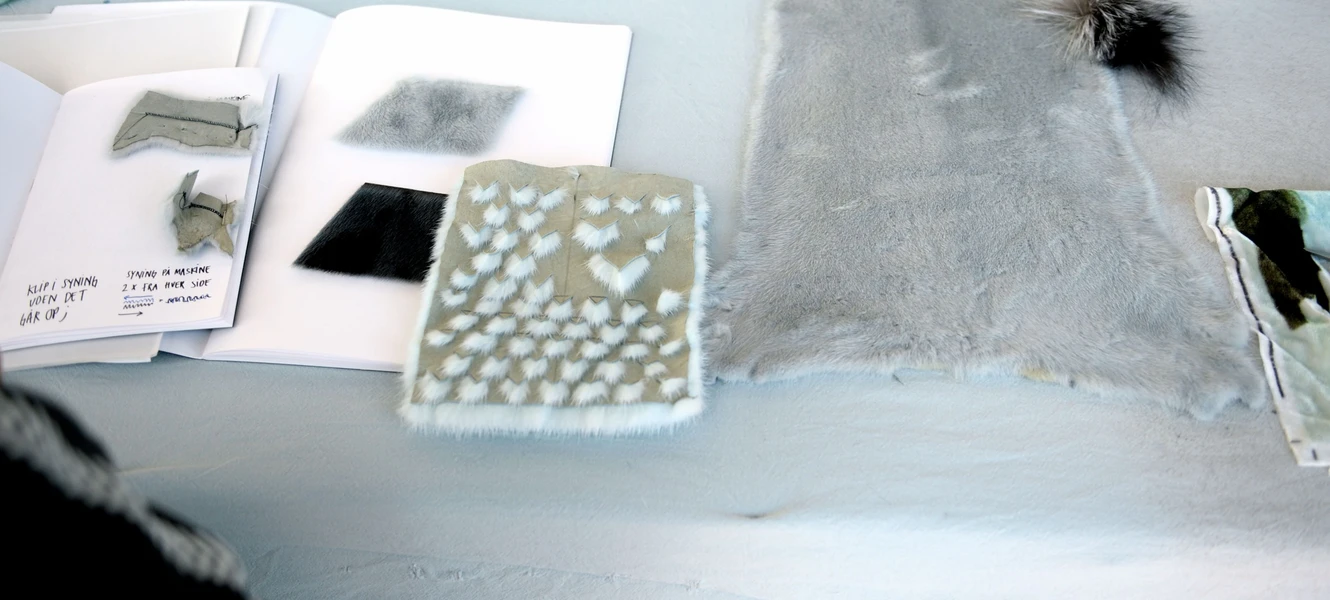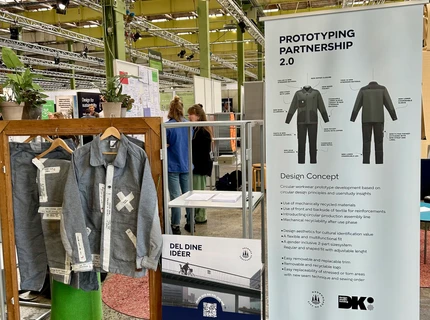
Designers map efforts in long life and sustainability
The cards are developed by the research department at Design School Kolding in collaboration with its LAB for Sustainability and Design.
"We have developed a series of method cards to support Kopenhagen Fur designers and furriers in their design process, so they can work with the life of the products. For when things last longer, it is ultimately a resource-saving measure, " says Assistant Professor Karen Marie Hasling.
In recent months she and Assistant Professor, Ulla Ræbild, have developed a specific tool for Kopenhagen Fur's work with sustainability. The result is a series of 29 cards. They have a number of facts on one side and a special sustainability compass on the other, and they can be used in three different contexts, the researcher explains: As an inspiration; as a tool for sharing knowledge and values in cross-disciplinary teams; and as a means to reflect on and analyse own processes retrospectively.
"The cards make users aware of the many different approaches there are to sustainability and long product life. They are a tool to develop a common language around sustainability, leading to increased precision in relation to focus areas and dissemination of specific efforts. An awareness of own processes is important for designers who want to work in a sustainable direction, "says Assistant Professor, Ulla Ræbild.
In preparing this toolkit the researchers draw heavily on past experience from Design School Kolding, including teaching, says Karen Marie Hasling:
"Sustainability is both difficult and overwhelming to deal with. I see it time and time again in the students' projects, where they often need a lot of time to understand the scope of the problem. Environment and ethics are issues that affect people and are easy to relate to. But sustainability is also about politics and culture, and we have therefore for several years worked with some basic sustainability cards that create a dialogue on the subject. In our collaboration with Kopenhagen Fur we're building on these cards as well as on our experience listening to the students' many questions."
Processes and insight
This integration of teaching and research in a cyclical process where both parts constantly enrich each other, is precisely one of the special beauties of the development work at Design School Kolding, says Karen Marie Hasling. She has a Master's degree in Design & Innovation from the Technical University of Denmark (DTU), and therefore appreciates the distinction between a technical and an artistic approach to the subject of design:
"As a design engineer you focus on comprehending and explaining design processes along the way. In the artistic design tradition the understanding often occurs along the way and afterwards, which presents completely different opportunities, "says Karen Marie Hasling.
Assistant Professor, Ulla Ræbild, trained as a fashion designer, adds:
"A design should appeal to a user both aesthetically and functionally. The sustainable aspect must therefore be integrated into the design process from the start, so that the concept and a sustainable approach are seen as one whole. Here the cards may be relevant. Our job as researchers and teachers here at Design School Kolding is not to point in any specific direction, but to make students as well as businesses aware of the opportunities that exist for impacting the sustainability philosophy."
In this context, both researchers agree that the cooperation with Kopenhagen Fur offers an interesting access to understanding the approach to sustainability in a large organisation with a number of existing processes.
Background
A strategic design perspective may eventually help companies, particularly within the fashion and textile industry, to develop more sustainable processes. This hypothesis was presented and explored in 2014/2016 through the project Fur and Sustainability – a design perspective. Here the Danish fur breeders’ organisation, Kopenhagen Fur, collaborated with Design School Kolding’s education, research and LAB departments to identify the particular problems associated with the design, in this specific context, fur and sustainability. Among a number of recommendations the outcome of the research project was the realisation that fur, compared to many other materials, has quite a unique durability and thus also a built-in sustainability; the organisation was still searching for tools to articulate that notion, however. That was the insight on which Assistant Professors Karen Marie Hasling and Ulla Ræbild from the Design School Kolding's research department developed their method cards.
In 2017, Design School Kolding and the international Cumulus Association will be hosting a large, international conference with the title REDO. The purpose of the conference is to zoom in on design’s role in creating a sustainable future and achieve impact on political decision-making processes. As a prelude to the conference, we will be bringing a series of articles to show Design School Kolding’s research and how we work to bridge the gap between design thinking and design practice.


